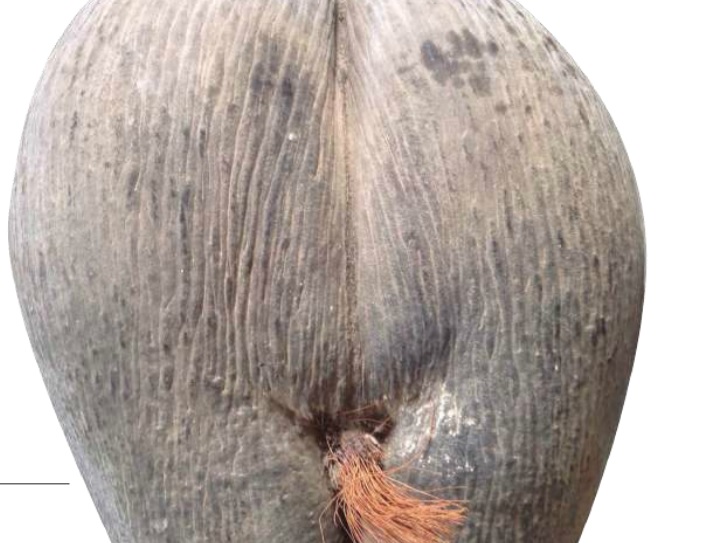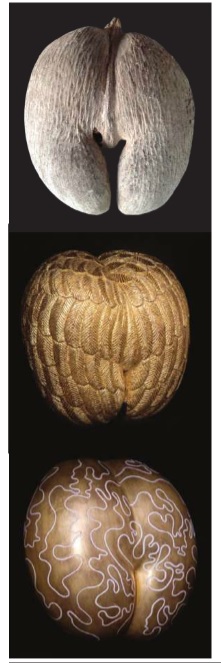
As an artist in the Seychelles, the seed of a palm tree called the coco de mer or `coconut of the sea’ found in this idyllic cluster of islands of 93,000 people, never ceases to fascinate me. It is huge and strangely formed of two domed parts that, depending on your imagination, could resemble the female or male pubic triangle, or even the derriere, writes Nathan Kiwere.
The exceptional size and suggestive form of the nut, the circumstances of its discovery, and some unusual qualities of the trees have given rise to several legends. Some think it has mythical and even magical properties.
It is said when the first European navigators in the sixteenth century set sail across the Indian Ocean, they discovered enormous two-headed seeds floating in the sea. They spawned a legend of fruits borne from giant trees growing at the bottom of ocean. However, coco de mer nuts were already being gathered from Indian, Sri Lankan, Indonesian and South African shores, but mostly in the Maldives. Otherwise the coco de mer tree is rare species of palm tree endemic to the islands of the Seychelles called Praslin and Curieuse.
It is also many things, including the biggest seed in the word; sometimes weighing up to 25kgs and measuring about one foot-ruler (12 inches) long. The tree is an endangered species protected as a world heritage. It is also a national symbol – and art inspiration.

It has dominated canvases of artists and the subject of countless sculpture works as the signature theme. For visitors, the entry stamp at immigration is designed in the shape of this seed and it is displayed in all its huge glory the passenger lounges and on the shelves of the duty free stores. George Camille, one of the Seychelles most recognisable artists has portrayed the seed in his works for over 30 years now and still counting. He has even held shows on the same representing his country at international art fares including the prestigious Venice Biennale in Italy.
Even visiting artists have found it fascinating and used it as a subject of quite intriguing productions. Marie-Laure Le Guay de Villepin alias Viébel is among the well-known artists that caught the coco de mer bug. Viebel is of course not the run-of-the-mill artist, having been married to former French Prime Minister Dominique de Villepin until 2011. Even before that, since 2006, she had focused on the concept of the “Seed of life”, mastering her art of sculpting and gilding, and developing sculptures of the coco de mer in bronze and Murano glass.
 The Independent Uganda: You get the Truth we Pay the Price
The Independent Uganda: You get the Truth we Pay the Price


